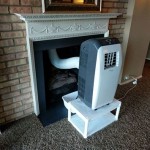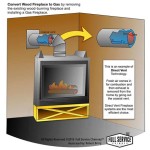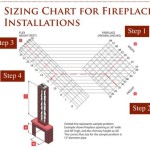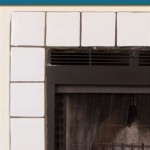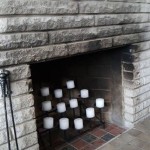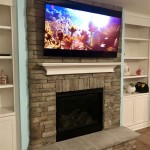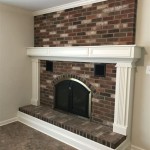Gas and Wood Fireplace Combo Kits: Bridging Convenience and Tradition
Gas and wood fireplace combo kits represent a unique intersection of convenience and traditional ambiance in home heating and aesthetics. These kits offer the advantages of both fuel types, providing homeowners with flexibility in how they heat their living spaces and the kind of atmosphere they create. Understanding the components, benefits, drawbacks, and installation considerations of these systems is crucial for anyone considering this type of fireplace solution.
The core concept behind a gas and wood fireplace combo kit is the integration of two independent heating systems within a single fireplace unit. Typically, the unit is designed to accommodate both a wood-burning firebox and a gas burner. The user can then choose to operate either the wood-burning portion or the gas portion, depending on their preferences and needs at the time. This adaptability is a significant selling point, appealing to those who appreciate the authenticity of a wood-burning fire but also value the ease and control of a gas fireplace.
The components of a typical combo kit include the fireplace firebox itself, usually constructed of heavy-duty steel or cast iron, a gas burner assembly designed to fit within the firebox, venting components specific to each fuel type, and a control system for the gas burner. Some kits may also include decorative elements like logs, embers, or stone facades to enhance the visual appeal of the fireplace, regardless of which fuel is being used. Understanding each component's function is essential for installation and maintenance.
Understanding the Key Benefits
One of the most significant advantages of a gas and wood fireplace combo kit is its versatility. Homeowners are not limited to a single fuel source. They can enjoy the crackling sounds and authentic aroma of a wood-burning fire on colder evenings when they have the time to tend to it. Alternatively, they can quickly and easily ignite the gas burner for instant heat and ambiance without the need for wood storage or ash cleanup. This flexibility makes the fireplace suitable for various occasions and lifestyles.
Another benefit stems from the efficiency of modern gas burner technology. Gas fireplaces, particularly those with sealed combustion chambers, can provide consistent and controllable heat output. This allows for zoned heating, where the fireplace is used to warm a specific area of the home, potentially reducing reliance on the central heating system and lowering energy bills. The thermostat control associated with gas burners offers a level of precision that is difficult to achieve with a traditional wood-burning fire.
Aesthetic appeal is also a critical factor. Combo kits are designed to replicate the look and feel of a traditional fireplace, regardless of the fuel being used. The gas burner can be concealed beneath realistic-looking artificial logs, creating the illusion of a wood-burning fire. This allows homeowners to enjoy the visual benefits of a fireplace without the mess and effort associated with wood.
Potential Drawbacks and Considerations
Despite the advantages, gas and wood fireplace combo kits also have potential drawbacks that should be carefully considered. One primary concern is cost. These kits tend to be more expensive than either a dedicated wood-burning fireplace or a dedicated gas fireplace due to the dual-system design complexity. The installation can also be more involved, requiring expertise in both gas line connections and chimney venting. This often translates to higher installation costs.
Another factor to consider is maintenance. While the gas burner component requires relatively little maintenance, the wood-burning portion still necessitates regular cleaning of the firebox and chimney to remove ash and creosote. Creosote buildup is a byproduct of wood combustion and poses a significant fire hazard if not properly managed. Therefore, homeowners must commit to regular chimney inspections and cleaning to ensure safe operation.
Venting requirements can also present a challenge. Wood-burning fireplaces require a dedicated chimney that meets specific height and construction standards to ensure proper draft and ventilation of smoke and combustion gases. Gas fireplaces, depending on the type of burner, may require a different type of venting system. A direct vent gas fireplace, for instance, vents combustion gases directly to the outside through a sealed pipe, requiring a different installation approach than a traditional wood-burning chimney. The compatibility of the venting systems for both fuel types must be carefully evaluated during the installation process.
Installation and Safety
Proper installation is paramount for the safe and efficient operation of a gas and wood fireplace combo kit. It is highly recommended to hire qualified professionals with experience in both gas and wood fireplace installations. A licensed gas fitter should handle the gas line connections and burner installation, ensuring that all connections are leak-tested and comply with local building codes. A certified chimney sweep can inspect the chimney and ensure that it is in good condition and properly sized for the wood-burning portion of the fireplace. They can also advise on any necessary repairs or modifications to meet safety standards.
When installing the wood-burning portion, it is critical to adhere to local building codes regarding clearances to combustible materials. This includes maintaining a safe distance between the fireplace and walls, floors, and ceilings. Proper insulation and fireproofing may be required to protect surrounding structures from heat and fire hazards. The hearth extension, the non-combustible area in front of the fireplace, must also be of adequate size to prevent sparks or embers from igniting nearby flooring or rugs.
Gas line connections must be performed with meticulous attention to detail. Any leaks can pose a serious fire or explosion risk. All connections must be properly tightened and tested using a gas leak detector. The gas burner must be installed according to the manufacturer's instructions, ensuring that the flame pattern is correct and that the burner is operating efficiently. Carbon monoxide detectors should be installed in the vicinity of the fireplace to provide an early warning of any potential carbon monoxide leaks.
Regular maintenance is essential for ensuring the continued safe and efficient operation of the fireplace. The chimney should be inspected and cleaned at least once a year, or more frequently if the fireplace is used heavily. The gas burner should be inspected periodically for any signs of wear or damage. The air intake vents should be kept clear of debris to ensure proper combustion. Homeowners should also familiarize themselves with the operation and safety features of both the wood-burning and gas portions of the fireplace.
In conclusion, gas and wood fireplace combo kits offer a compelling combination of convenience and traditional appeal. They provide homeowners with the flexibility to choose between the instant heat and ease of a gas fireplace and the authentic ambiance of a wood-burning fire. However, careful consideration must be given to the cost, maintenance requirements, and installation complexities of these systems. By understanding the benefits, drawbacks, and safety considerations, homeowners can make an informed decision regarding whether a gas and wood fireplace combo kit is the right choice for their needs.

Temp Cast Indoor Masonry Fireplace And Oven Combo Patio Outdoor Furnishings

Mezzo Vent Free Fireplace Oven Combo Stone Age Manufacturing

Outdoor Fireplace Kits Masonry Stone

Outdoor Fireplace And Oven Makes Entertaining Easy

Outdoor Combo Fireplace And Oven Round Grove S

Fireplaces Cambridge Pavingstones Outdoor Living Solutions With Armortec

Fireplaces Inserts Wood Gas Fireplace Xtrordinair

Outdoor Fireplace Oven Kits

Fireplaces Inserts Wood Gas Fireplace Xtrordinair

Combination Fireplaces Gazco Stovax Traditional
Related Posts

